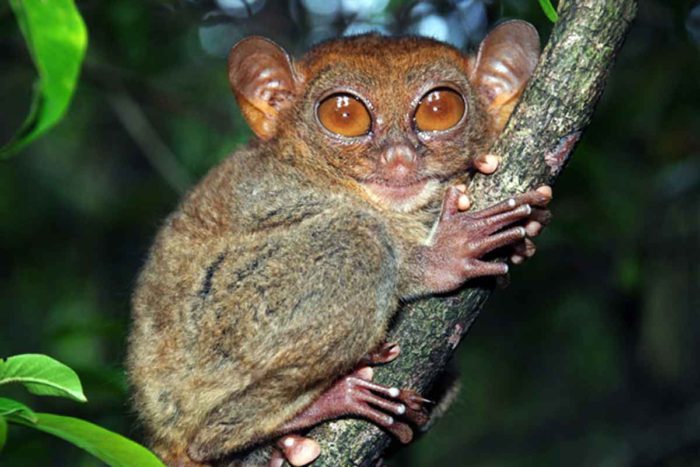
Tarsiers – tiny, carnivorous primates – are our distant cousins, according to scientists at Washington University School of Medicine, who sequenced and analyzed the tarsier genome. The findings, published October 6, 2016 in Nature Communications, place tarsiers on the same branch of primate evolutionary tree that leads to monkeys, great apes and humans.
Native to the islands of southeast Asia, tarsiers are the only exclusively carnivorous primate; they eat insects, small birds, rodents and lizards. Tarsiers are small animals with enormous eyes – each eyeball is as large as the animal’s entire brain. The tiny animals are formidable nocturnal hunters, with heads that can rotate 180 degrees in each direction and the ability to track prey using ultrasound. Their legs and feet are adapted for sudden, powerful leaps, with an elongated ankle bone, the tarsus, for which they are named.
Having the complete tarsier genome allowed the researchers to study the genes that make tarsiers unique. Since, for example, the tarsiers’ eyes and ankle bones differ so much from those of other primates, the genes associated with eye or bone growth and development are likely to differ as well. According to a Washington University statement:
By comparing gene sequences from tarsiers with those from other primates, the researchers identified 192 genes that are changing faster or slower than what is happening in other primates. These genes likely are linked to the tarsiers’ unusual traits. They then scanned the scientific literature to identify human diseases associated with those genes and found 47 diseases. About a quarter were related to vision and another quarter to musculoskeletal problems.

The analysis of the tarsier genome also showed that tarsiers are showing signs of population decline. Wesley Warren is an associate professor of genetics at Washington University and the study’s senior author. Warren said:
We think the population size is declining and not rebounding. Most of the decline is due to loss of habitat, but the pet trade also is contributing. Once captured, sadly, the result is often death due to physical and dietary needs not being met. It’s possible that some tarsier species will go extinct if we don’t change these trajectories.
Enjoying EarthSky so far? Sign up for our free daily newsletter today!
Bottom line: A genetic analysis puts tarsiers on the branch of the primate evolutionary tree that leads to great apes and humans.











